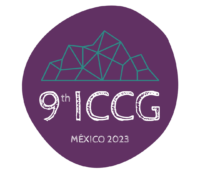Within the framework of the international comparative multisite research project “Urbanization, Gender and the Global South. A transformative knowledge network,” our team in the Ramallah chapter approached the project’s questions on the causes behind the feminization of urban poverty and challenges to women’s right to the city from the domain of habituation of crises and the lacking disaster preparedness. The goal of the ethnographic research and research by design activities that we conducted was to mobilize knowledge and opinions to create informative materials in formats that are comprehensible to the general public, with the mission to support larger efforts seeking to pressure decision makers and shift paradigms towards a reality that is more secure as opposed to today’s abject vulnerability.
Palestine is a geography where crisis is not an event but continuous and compounded, it is political, economic, social, ecological, and therefore it has very tangible and visible spatial materializations. We focused on Ein Qiniya, a liminal village and at the same time a neighborhood within the administrative borders of Ramallah. About a third of its houses and cultivated fields lie within the recently expanded Master Plan of the highly contested and speculative-developments-driven city. At the same time, in the 1970s about half of its lands were confiscated by the Israeli regime that established the Dolev colony with watchtowers peeking through the windows of Ein Qiniyans.
Ein Qiniya’s picturesque landscape of agricultural terraces and fields line the paths of two important Wadis (water ways, valleys) that in winter fill up with rapid streams that feed from the mountainous slopes of Ramallah, while its houses rest in the middle atop a hill. According to the new regional plan of the Palestinian Authority, the upstream stretches of these waterways are to become the Ring Road and works in some sections have been completed, in disregard to the fragile ecosystem and the climate change related intensification of water cycles, as well as to the livelihoods of the many Ein Qiniya families that cultivate the area. A water treatment plant that was recently established upstream is already contaminating the northern arm, Wadi alDilb, and another plant is under construction in Wadi alOqdeh, the southern arm. Atop the socio-political crisis that rendered the lives of Ein Qiniyans precarious, now they are facing an ecological crisis and a new kind of economic crisis as a result of the intensifying speculation around the lands they live on but do not own – as the majority are descendants of refugees.
While there is considerable research on how urban marginality is systemically and socially reproduced, there is less exploration of how it is spatially reproduced. In light of recent wars and advancements in technologies of destruction, some urban scholars have been investigating concepts such as ‘urbicide’ (Graham 2006) and ‘spacio-cide’ (Hanafi 2009). Such studies tend to focus on aspects of spatial annihilation, its impact on economies and the subjugation of urban morphologies to the logics of surveillance and policing (e.g. Graham 2006), and the way spatial perception impacts narratives of identities and accentuation of traumas (e.g. Abourahme 2011). In Ramallah, there is little investigation of how neoliberalism – which plays out as new colonial capitalism – is spatializing its domination through the urban, causing socio-cide (Hilal and El Sakka 2015); where residents are socially disconnected, contestation increased, and opportunities to challenge the status quo of compounded crises are hindered.
Building on feminist critiques of capitalist social formation, this presentation will share the key findings of our research and the nuanced mappings that explored how the reality of compound crises and systemic spacio-cide affect the everyday lives of people in Ramallah. We will discuss the features of urban spaces that incubate regressive patterns of social reproduction, spatially engender discrimination, marginality, othering, and inhibit the formation of collective resistance and more just ecosystems. We will share the imagined alternative master plans and site-designs that were produced by 20 women interlocutors from Ein Qiniya ahead of the forthcoming official proposals for the development of their neighborhood, and a 3-minute advocacy short film.
Keywords: neighbourhood, pandemic management, collective and community care
References:
Abourahme, N. (2011). Spatial collisions and discordant temporalities: Everyday life between camp and checkpoint. International Journal of Urban and Regional Research 35 (2): 453–461.
Graham, S. ed. (2006). Cities, War, and Terrorism, Towards an Urban Geopolitics. Third Edition. Oxford: Blackwell Publishing.
Hanafi, S. (2009). Spacio-cide as a colonial politics in Palestinian Territory. Grotius International, Géopolitiques de l’Humanitaire (30 September). www.grotius.fr/spacio-cide-as-a-colonial-politics-in-palestinian-territory (accessed 2 February 2014).
Hilal, J. and El-Sakka, A. (2015). A Reading on the Socio Urban Changes in Ramalah and Kufur Aqab. The Center for Development Studies. Birzeit University, Birzeit.
